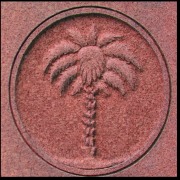The American South is littered with picturesque remains of abandoned historic towns, buildings, public works projects and countless other man-made structures.
In many ways these places are more real than any other representation of history that we can encounter, touching our imaginations and whispering to us about the past in a visceral way. Ruins often pose arrogantly, as if defying the passage of time to tell us their story. A continual onslaught from of nature, people and decay means that these places are dying yet being re-born again with every passing minute as tangible echoes of the past co-exist with the present.
While many such sites remain visually impressive, others have completely succumbed to decay and have all but disappeared from the surface.of the earth, leaving the architectural ruins discernible only through archaeological investigation. Some of the late-19th and early-20th century abandonments featured on this site are not old enough or yet deemed “significant” enough to warrant intense archaeological or historical inquiry. Many colonial sites and some later sites associated with famous people or events have undergone intense archaeological testing. A few remote sites and the fascinating stories behind them simply haven’t yet been brought to the attention of archaeologists and historians. Regardless of the age and condition, abandoned ruins are dynamic locations that offer visitors a unique snapshot into the past from the present.
Founded in 2010, Palmetto Brick Society was established to identify and document such sites and share many of the fascinating stories behind the amazing historic ruins found throughout the state of South Carolina and across the southeastern United States.
Be respectful of our collective cultural heritage and obey the law!
Many of the places featured on this site are accessible to the public. However, some are not. For this reason, PBS does not provide exact locations of endangered resources, unprotected sites, active archaeological excavations, or any sites located on privately owned land. If you choose to visit ANY of the sites featured by PBS, please keep in mind that these are precious cultural resources and your top priority is to DO NO DAMAGE. Removal of anything, use of metal detectors, or digging of any kind at ANY of the sites featured on PBS is prohibited by law. In addition, those caught trespassing on sites located on private property without explicit permission will be subject to prosecution by the respective property owner(s).
After visiting PBC, please take only photographs and leave only footsteps.
